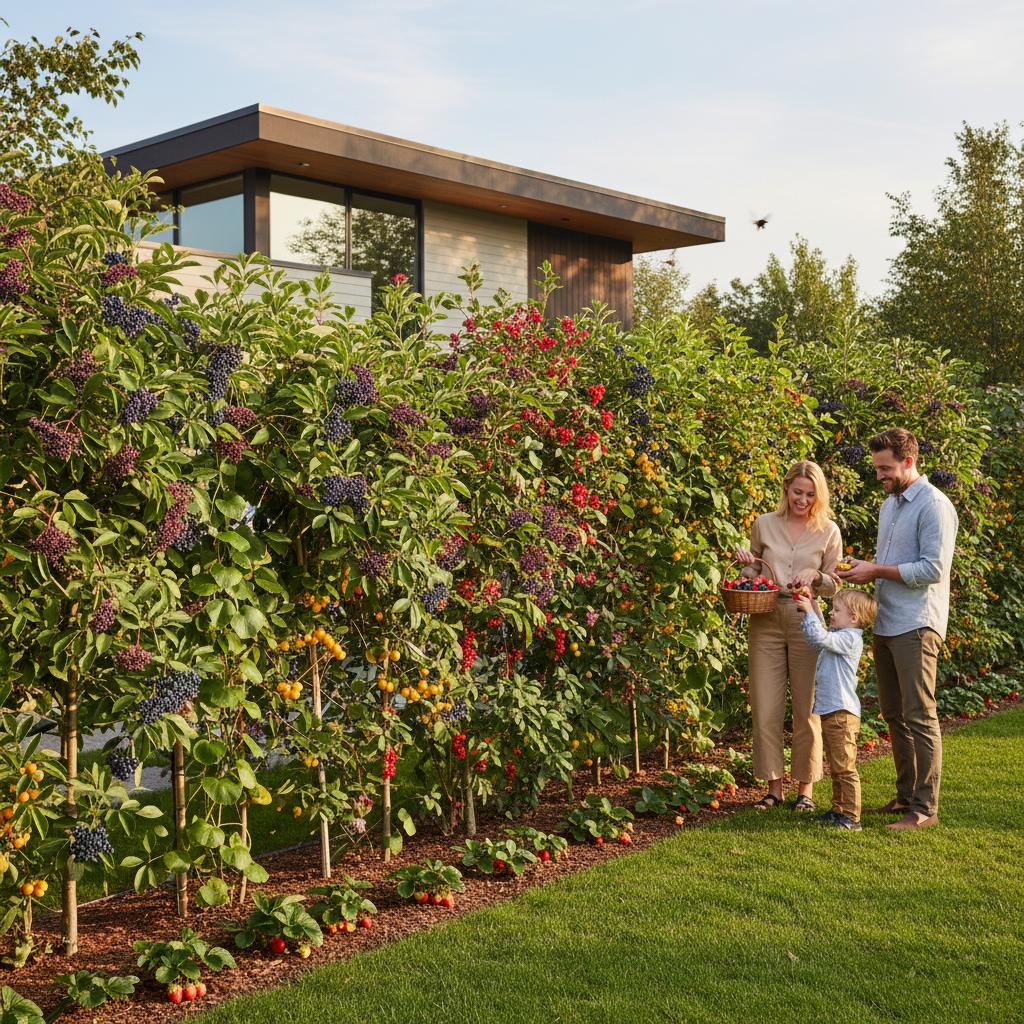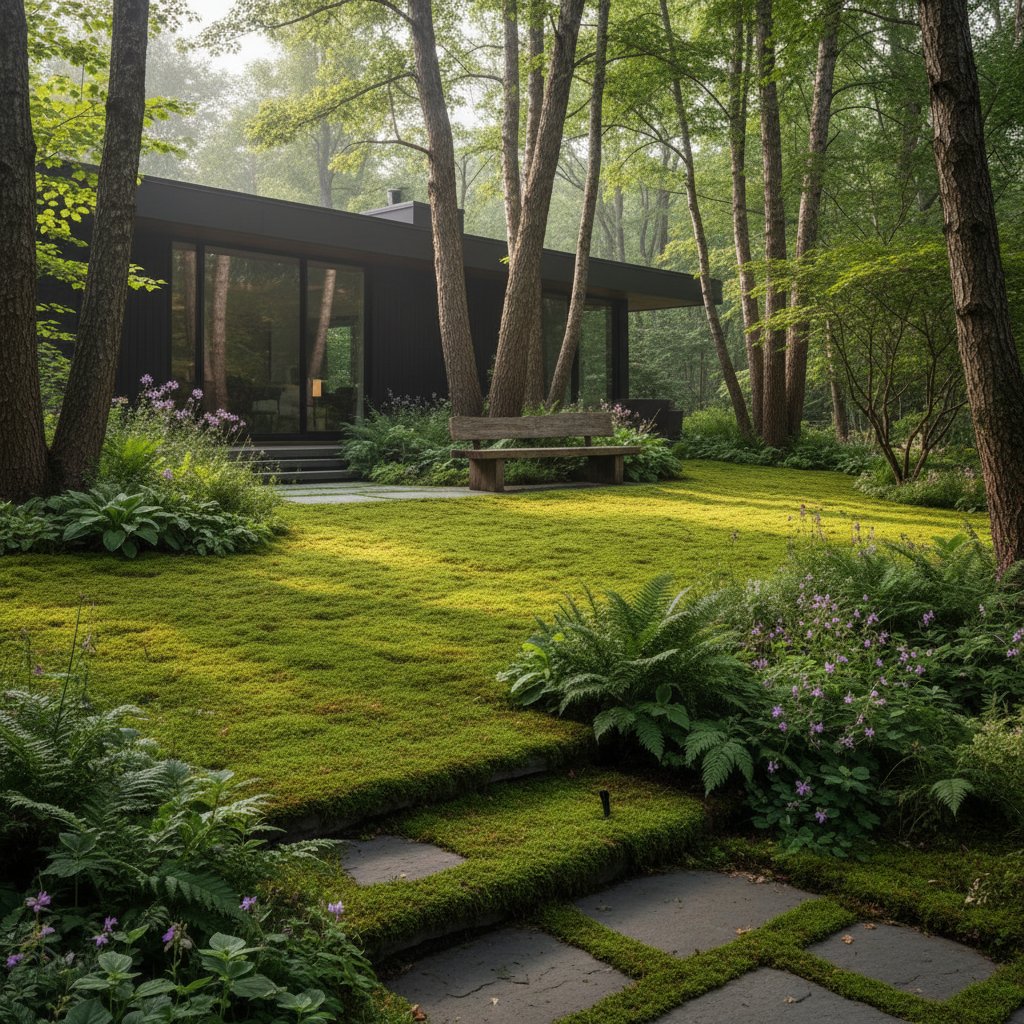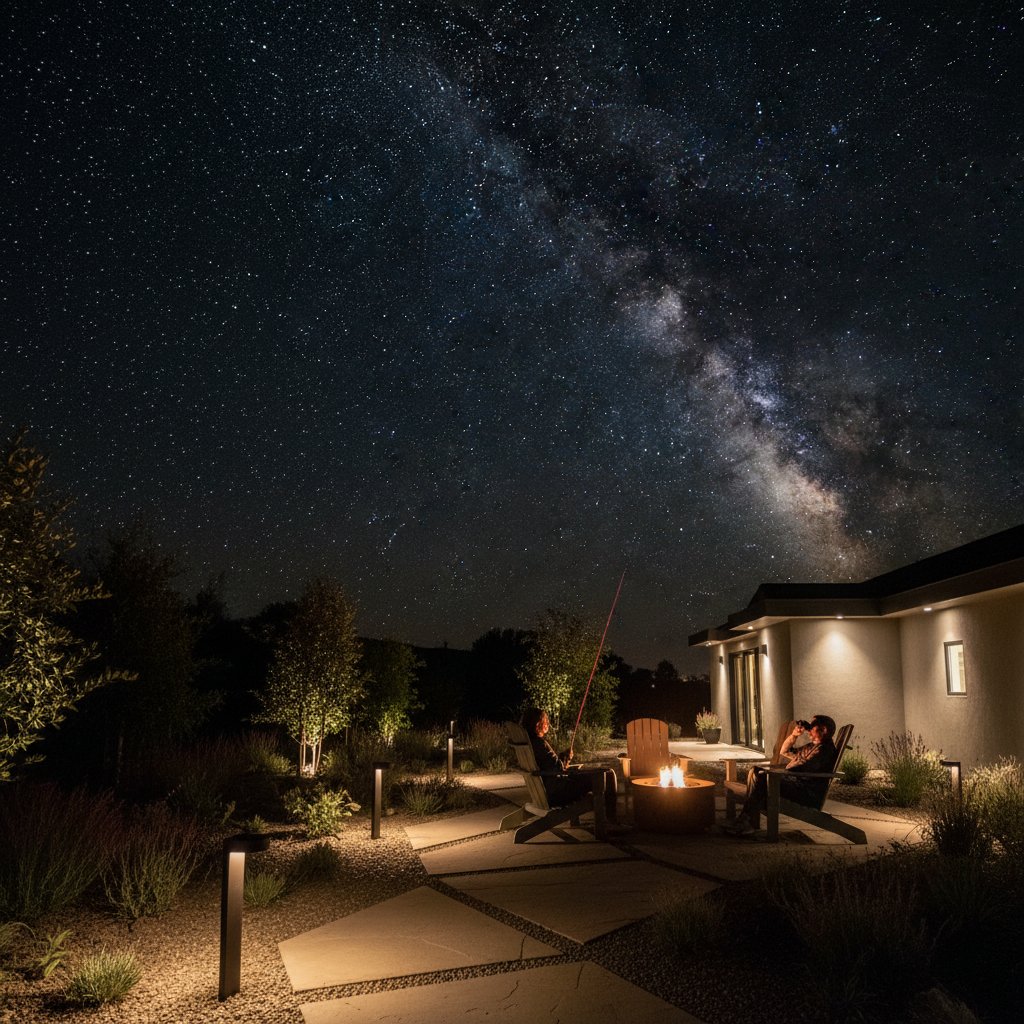Establish Privacy and Productivity with Edible Hedges
Privacy hedges extend beyond mere visual barriers. Strategic plant selections enable these features to yield edible harvests while drawing beneficial insects. Edible hedges consist of closely spaced fruiting shrubs, compact trees, or perennial herbs that function like conventional hedges yet deliver additional garden advantages.
Homeowners seeking enhanced seclusion without sacrificing usable space find edible hedges particularly effective. These installations prove versatile across expansive properties and compact lots alike, blending utility with aesthetic enhancement.
Defining an Edible Hedge
An edible hedge forms a perimeter using plants that generate consumable yields. Rather than relying on non-productive evergreens like boxwood or privet, incorporate berry-producing bushes, fruit-laden shrubs, or nut trees. As these plants mature, they develop into thick screens that maintain form through seasons of growth and harvest.
Evergreen varieties or those with robust branching ensure year-round structure. Popular selections encompass:
- Blueberries, valued for vibrant seasonal foliage shifts and tangy berries, thriving in acidic soils with pH levels between 4.5 and 5.5
- Raspberries and blackberries, noted for rapid establishment and dense canopies, requiring trellising for optimal support
- Currants and gooseberries, suited to confined areas with their upright growth and tolerance for partial shade
- Hazelnuts or filberts, ideal for elevated screens up to 15 feet, offering nuts alongside autumn color
- Rose hips, elderberries, or aronia berries, prized for resilience in varied climates and minimal upkeep demands
Blueberries demand consistent moisture and benefit from cross-pollination among multiple varieties. Raspberries flourish in well-drained sites and produce abundantly with annual renewal pruning. Currants adapt to cooler regions and resist common fruit pests effectively.
Designing Your Edible Hedge Layout
Evaluate your objectives prior to planting. A tall enclosure for a secluded patio differs from a modest border along a pathway in terms of scale and plant density. Assess site dimensions, sunlight patterns, and mature plant footprints to inform selections.
Essential considerations involve:
- Height and spread: Target growth from 3 to 12 feet, matching shrubs to site constraints for balanced coverage
- Establishment speed: Opt for vigorous types like blackberries for swift enclosure, or patient growers like elderberries for low-intervention setups
- Soil preparation and irrigation: Conduct pH and nutrient tests; amend with peat moss for acid-lovers or lime for alkaline-tolerant species, ensuring consistent deep watering
- Regional suitability and light exposure: Prioritize full-sun performers for maximum output; select shade-adapted options like currants for dappled areas
Position plants to allow interlocking branches upon maturity, fostering a unified barrier. Space compact shrubs at 2 to 3 feet intervals, while allocating 4 to 6 feet for broader specimens. Incorporate companion planting, such as interspersing herbs, to bolster biodiversity.
Nurturing Your Edible Hedge
Post-planting care focuses on robust establishment during initial years. Provide thorough irrigation during establishment phases and apply organic mulch layers to retain moisture and suppress competitors.
Maintenance practices include:
- Annual pruning: Trim in late winter or post-harvest to encourage airflow, eliminate crossings, and refine contours
- Spring fertilization: Apply balanced, slow-release formulas tailored to fruit needs, such as those high in potassium for berry development
- Pest monitoring: Inspect for invaders like Japanese beetles or avian foragers; deploy row covers, companion repellents like garlic, or beneficial nematodes as needed
- Frequent harvesting: Pick ripe produce promptly to stimulate further yields and prevent overripening
Edible hedges embrace organic forms over rigid geometries, showcasing blossoms, fruits, and foliage variations. This natural aesthetic appeals to those favoring informal gardens. For structured outlines, shear lightly after fruiting cycles conclude.
Investment and Implementation Time
Initial expenses for edible hedges surpass those of decorative alternatives due to premium stock costs. Budget $8 to $20 per young plant, depending on size and variety. A 50-foot linear installation might require 20 to 30 units, yet recurring harvests offset expenditures through self-sufficiency.
Installation timelines vary by scope. A modest 10-foot segment demands one afternoon of effort, including site prep and staking. Comprehensive yard perimeters extend over weekends, with ongoing tasks limited to seasonal tending. The harvested bounty often justifies the input, providing nutritional and economic returns.
Advantages Extending Past Screening
Edible hedges contribute to ecological harmony by hosting pollinators and wildlife. Their root systems stabilize soil, mitigate wind gusts, and dampen ambient sounds. Gathered yields enrich meals, support local food independence, or serve as thoughtful shares.
These features educate younger generations on cultivation cycles, fostering appreciation for natural processes. Seasonal transformations— from spring blooms to summer abundance and fall hues—infuse landscapes with dynamic interest, promoting active engagement outdoors.
Implementing Your Edible Hedge Project
Commence with a trial section featuring reliable performers like blueberries or a currant-raspberry blend. Observe growth patterns and yields to refine future expansions. Diversify selections across ripening schedules for extended availability, from early gooseberries to late elderberries.
Integrate accessibility for maintenance by reserving pathways and irrigation lines. Employ raised beds in challenging soils to optimize drainage and nutrient access. As your hedge develops, it evolves into a thriving partition that secures privacy while sustaining abundance, anchoring your garden's vitality.



